By Yoni Peres
JERUSALEM — We are now celebrating 50 years for the “reunion” of west and east Jerusalem.
In 1967, in response to the threast of Gamal Abdel Nasser, Israel commenced the Six Day War. Jordan and Syria joined Egypt and as a result, Israel conquered Sinai from Egypt, the Golan Heights from Syria, and the West Bank, including east Jerusalem, from Jordan.
Since then, it has been a very challenging task for the Jerusalem mayors to manage this complicated city with its unique topographic and demographic situation.
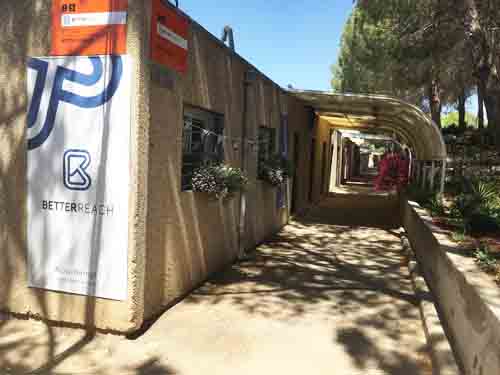
I joined Ran Kunik, the mayor of Givatyim, for a visit to the holy city, guided by Ofer Berkovitch, Deputy Mayor in charge of Culture, City Center, Economic Development and Employment. We met at the Givat Ram, the Hebrew University Campus. A group of old one story buildings, formerly known as the “Thousand Student Dorms,” have been converted into a new project, titled “Hi-Tech Village.” The concept is to allow hi-tech and start- up companies to work in a beautiful friendly setting, with subsidized low rent, reduced taxes and a fruitful proximity to the Hebrew University, Hadassah Hospital and other academic facilities nearby.
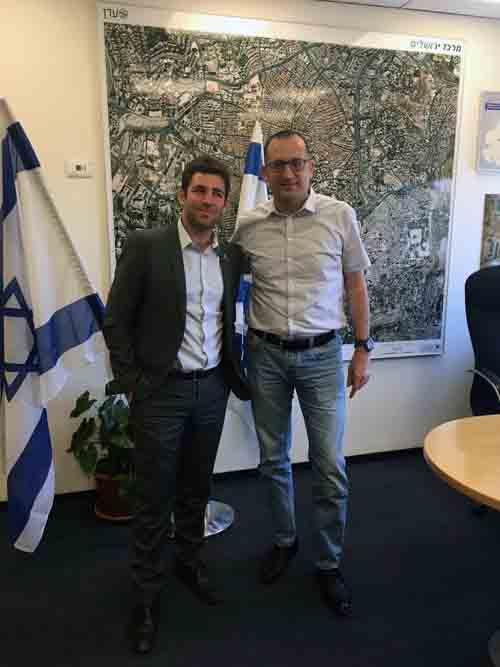
Berkovitch, 36, was born and raised in Jerusalem. “12 years ago,” said Ofer, “I began my public activity. Jerusalem experienced a tough crisis, with multiple problems – lack of jobs, poor culture with no municipal support, bad transportation, declining education. The public was indifferent towards this situation”.
Berkovitch decided to try and save the city. Beginning with a handful of friends, he established the “Hitorerut” (wake-up) movement. “We had no money, nor political experience, but we did have a vision- to guarantee the Zionistic and pluralistic future of Jerusalem.”
He ran for the city council in 2008, supported Nir Barkat’s successful election as mayor, and in 2013 he was elected deputy mayor.
The deputy mayor said he was influenced by Harvard Prof. Michael Porter’s strategy, based on competition of business, in the promotion of culture, tourism, hi-tech and biotech. The city encouraged both interior and outside tourism activities. One of the most important projects was changing the Mahne Yehuda market into a cultural and culinary center. Not just booths for produce anymore, but cafés, bars, restaurants and sophisticated shops, attracting visitors from all over the country. The next stage was economic development. Berkovitch and his Hitorerut colleagues created a team for creative economy- looking for ways to prevent young talents from leaving the city. They borrowed from Toronto University Prof. Richard Florida’s theory for urban regeneration. The program, named “JNext,” is a creation of start-up accelerators, networking events, incentives for entrepreneurs, and branding. Over the last three years, more than 500 technological companies joined the program and participated in 400 networking events. These steps created a new ecosystem. “Made in Jerusalem” is a non- profit organization with the goal of positioning the city among the 20 largest innovative cities.
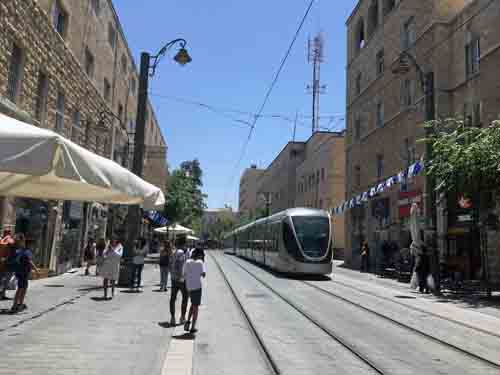
The local light train has improved tremendously the transportation in the city and decreased the traffic congestion. In 2019, the-28 minute high speed train will upgrade the connection of Jerusalem – Tel Aviv, and more local lines will be added.
The area at the city’s main entrance, near the “Binyanei Ha’uma” convention center, will be developed as a 10 million square foot business quarter. The goal is to increase the employment rate of sq. ft. per resident, which is at the moment very low (45, comparing to Tel Aviv , which is over 200).
New roads and highways will be paved, one of them allowing an easier approach to the “Har Hotzvim” hi-tech park at the northwest part of the city. Restaurants and an additional light train line will upgrade the park quality. Other technological parks are planned at the Ram area, near the university campus, and at the Malha area.
The Talpiot industrial area will be developed and upgraded as well as Givat Shaul, near the northern entrance.
Leaving the campus, we drove into the city center, and moved to Berkovitch’s office in the city hall, at the Safra Square.
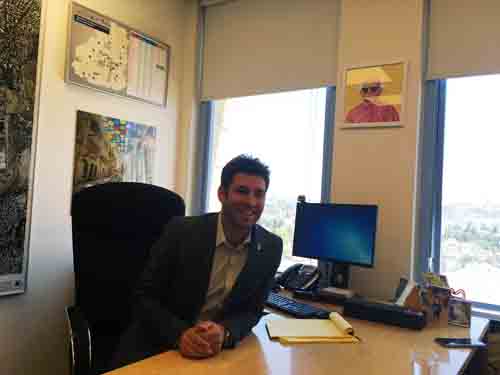
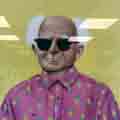
At his desk, with an illustration on the wall of David Ben-Gurion, a man with a vision, he told us about the plans for the development of the city center, being carried out by “Eden,” the Jerusalem Development Authority.
Currently, Jerusalem has 870,000 residents, nearly 300,000 of them Arabs. Out of 570,000 Jews, 200,000 are “Haredim” – Orthodox Jews.
The main urban challenges are: Improving quality of life of the peripheral neighborhoods; improving the city center; creating peace and harmony among the various ethnic and demographic factions: Jews: Orthodox, religious, secular, Ashkenazi and Sephardi; Muslims; Christians; new immigrants; gays and lesbians; and others.
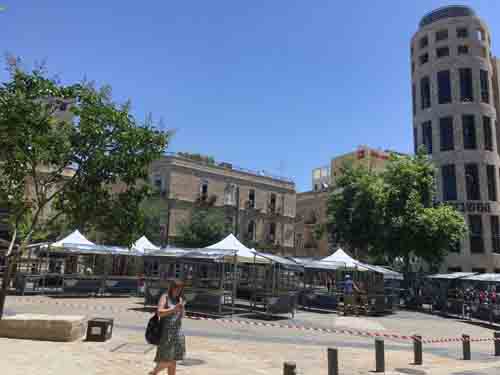
Since 1992, there has been a trend of moving out of the center, towards the suburbs. The result was weakening of the city center’s quality. The vision, carried out by “Eden.” is to create two “anchors” – Mamilla in the east and Mahneh Yehuda in the west. In between, on the central axis is Zion Square. The vision is an active, bubbling city center, with continuous activity, attracting tourism and local young residents. The upgrading allows more interest, attractions and pedestrian walking, rather than driving.
The Bezalel school of art and design, with 3,000 students, will be relocated from Mount Scopus into the city center. Agron student dorms have been constructed with 400 low rent bedrooms for students. Real estate lots have been rented by business owners, hotels and restaurants, small apartments, and offices.
The city encourages small businesses by advising them as they create business plans. Famous retail brands have been invited to open branches at the city center.
The hovering umbrellas projects will cover some of the center streets. Shading by trees, upgrading Zion Square and nearby streets, according to Prof. Florida’s concept, are planned.
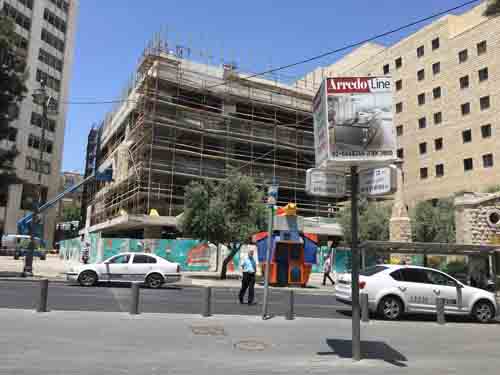
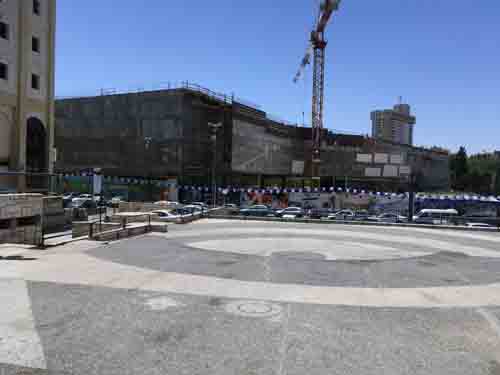
The building which used to be the “Hamashbir” department store, is now being converted into a “Wework” project. The Museum of Tolerance, with the support of the Simon Wiesenthal Foundation, is under construction, near Independence Park. Near the Gerrard Behar Center, four additional schools of art will be constructed. Nightlife, bars, restaurants, performances, cultural centers and street artists will add more color and interest.
In order to solve the traffic problems, light train stops will be added, as well as an underground segment. Parking spaces will be added by rotary carousel parking lots.
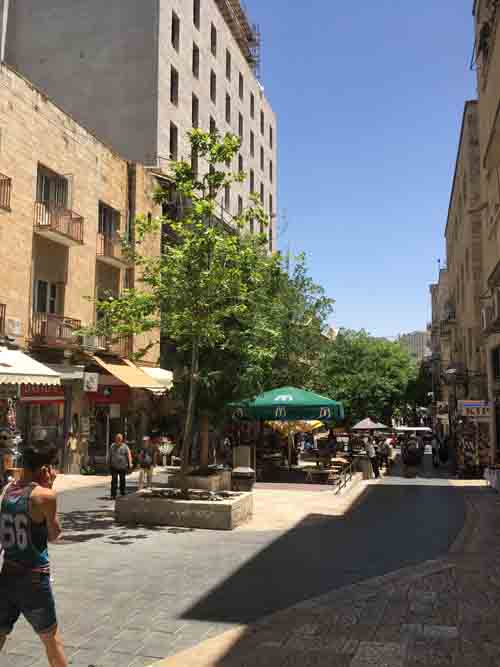
At the end of the tour, walking through the city center, from Safra Square, through Jaffa Street, Ben Yehuda “Midrehov” (pedestrian street), crossing the famous King George Street, with the noise of the construction machines, one cannot ignore the signs of a face lifting which the center is going under.
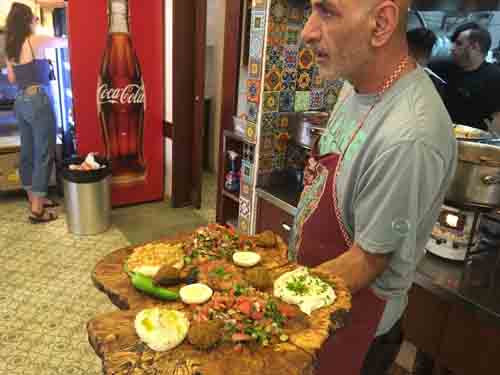
We end up at the colorful, bubbling Mahneh Yehuda Market, having a delicious lunch at “Azura,” serving home made, kerosene burner cooked meals, located at the Iraqi market section.
Is Jerusalem really waking up? Let’s hope…
*
Freelance writer Peres is a retired veterinarian and landscape architect based in the Tel Aviv area.